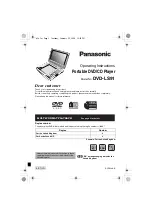
17
3.3
Connectors
3.3.1
Main LED Connector
This connector attaches the power leads and sensors for the LED to the main unit. The
connector is a twist connector and must be rotated 20 degrees after plugging in until a snap
is heard. Connector can be released by pulling back on the silver-colored thumb release.
3.3.2
Cooling Tube Connectors
These are the liquid cooling disconnects: These dripless quick disconnects allows removal of
the cooling tubes from the front of the unit. Pulling back on the spring-loaded collar
disconnects the plug and automatically seals the ends of the cooling hose. This allow for ease
of setup and routing of lines through Faraday cages.
CAUTION: THE COOLING HOSES MUST BE CONNECTED BEFORE POWERING
ON UNIT. The cooling tubes are interchangeable, but both must be plugged before
operation. Powering on unit without the cooling tubes attached may damage the fluid pump.
Additionally, powering the LED with the liquid cooling disconnected may burn out the LED.
3.3.3
ANALOG-IN BNC Connector
An analog input from 0-5v controls intensity through PWM dimming.
3.3.4
TTL-IN BNC Connector
Allows for the control of the LED like a shutter. When the LED switch is in the TTL
position, TTL-IN is gated low, which keeps the LED in the OFF state. Once TTL-IN receives
a high signal, the LED turns on for the duration that TTL-IN is held high.
3.3.5
TTL-OUT BNC Connector
Outputs a triggering signal for external software. When the LED is off, TTL-OUT is high;
when the LED is on, TTL-OUT is held low the duration that the LED is on.
3.4
Fault Conditions
The Lambda HPX is equipped with temperature and flow monitors to maximize the life of
the LED. Should a fault occur, the screen turns red and the lamp is turned off automatically.
If the screen turns red, and the text is unchanged, the LED temperature has exceeded it’s
safe operating temperature. If the corner of the screen displays “Pump” or “Fan” when
turning red, it means that the fan or pump has failed, and is no longer turning.
LAMBDA HPX HIGH-POWER LED LIGHT SOURCE SYSTEM OPERATION MANUAL – REV. 1.03E (20141208)
















































